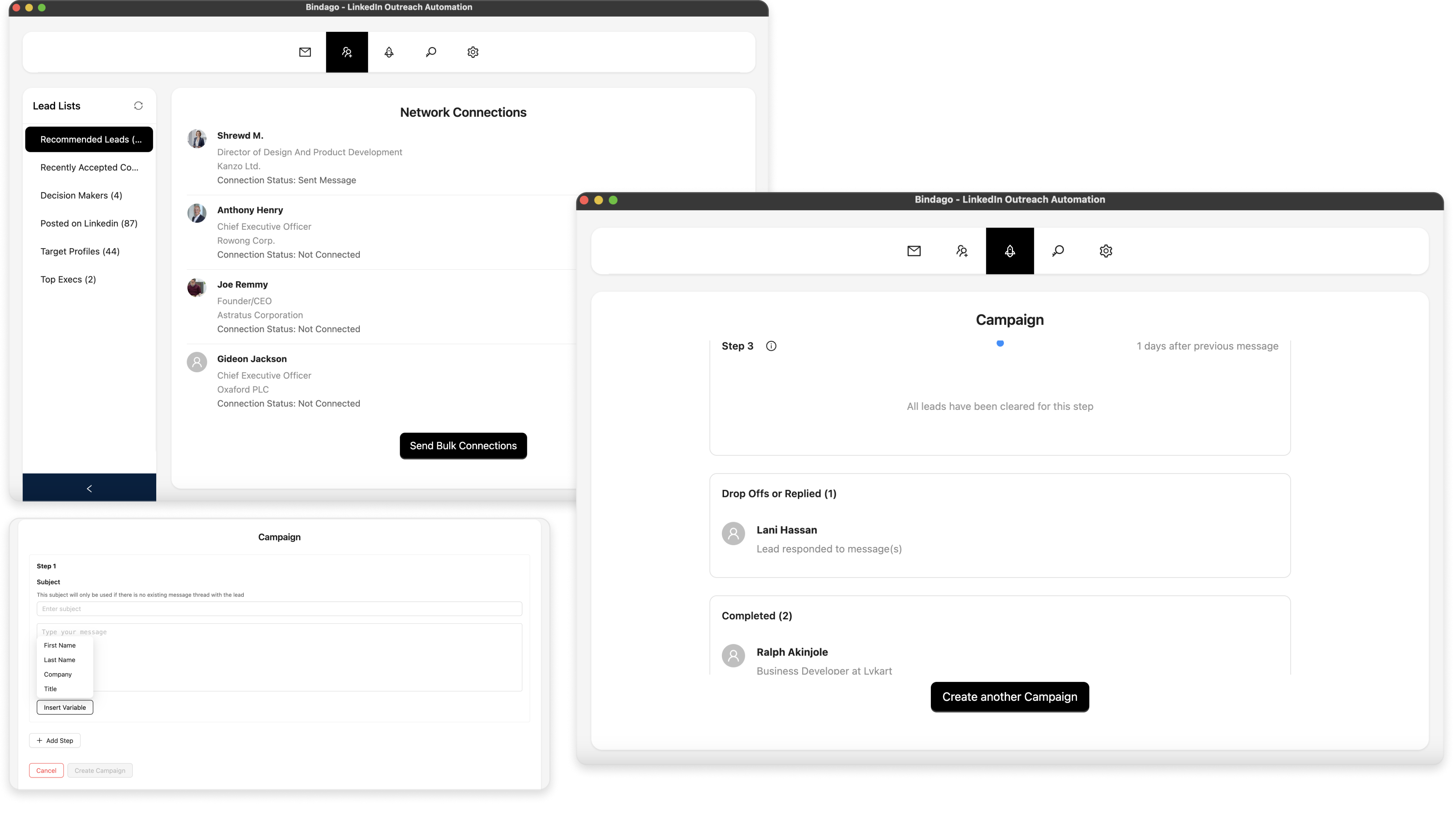How to Automate Parts of Prospecting Without Losing the Human Touch
In the world of sales, prospecting is a tale of two extremes. On one side, you have the time-consuming, manual process of researching every lead and crafting a unique message. On the other, you have the soulless, robotic automation that blasts generic templates to thousands, burning leads and damaging reputations.
For years, sales professionals have been told they have to choose: efficiency or personalization. But what if that’s a false choice?
The secret to modern, effective prospecting isn’t about choosing between the human touch and automation. It’s about using automation to scale the human touch. This guide will show you how to automate the repetitive parts of prospecting so you can save time while making your outreach more personal, not less.
Where Most Prospecting Automation Goes Wrong
We’ve all received them: the generic LinkedIn messages that start with "Hi {{firstName}}," (or worse, "Hi there,"). This is where automation gets a bad name. The biggest mistakes include:
- Generic, Copy-Pasted Messages: Sending the same template to everyone, regardless of their industry, role, or recent activity. It shows a complete lack of effort.
- Pitching Immediately: Jumping straight into a sales pitch in the first message without building any rapport or providing value.
- Ignoring Context: Sending a message that has no relevance to the prospect’s current situation, challenges, or goals.
This approach doesn’t just lead to low response rates; it actively alienates potential customers and makes them less likely to engage with your brand in the future.
The Hybrid Strategy: Automating Tasks, Not Relationships
The right way to approach this is with a hybrid strategy. You automate the tedious, repetitive tasks so you can focus your energy on the high-impact, human elements of prospecting. Here’s how to break it down.
1. Automate the "Warm-Up"
Before you even send a connection request, you can use automation to get on a prospect's radar in a subtle, non-intrusive way. This is about building familiarity.
- Actionable Tip: Set up an automated sequence that begins by viewing a prospect’s profile. A day or two later, have it like one of their recent posts. The prospect gets two notifications with your name and face, making you a familiar presence before you ever ask for anything. This simple "warm-up" can dramatically increase your connection acceptance rate.
2. Semi-Automate the First Connection
Your connection request is your first direct interaction. While you can automate the sending of requests, the message itself must feel personal.
- Actionable Tip: Segment your prospect lists by industry, job title, or a shared interest. Then, create a personalized connection request template for each segment. Instead of a generic "I'd like to connect," try something like:
"Hi {{firstName}}, I saw you're also in the SaaS marketing space in Chicago. I've been following {{companyName}}'s work and would love to connect with another local industry professional."
This message is still a template, but it’s tailored to a specific segment, making it feel far more relevant.
3. Automate the Follow-Up (But Stop When They Reply)
This is where automation truly shines. Manually tracking who to follow up with and when is nearly impossible at scale. An automated follow-up sequence ensures no lead slips through the cracks.
- Actionable Tip: Create a sequence of 2-3 value-driven messages that are sent automatically over a couple of weeks. The first message could share a relevant article, the second could offer a quick insight, and the third could be a soft call-to-action.
The golden rule: The automation must stop the moment the prospect replies. This is the critical hand-off from automation to a real human. Once they engage, it's your job to step in and have a genuine conversation.
The Right Tool for a Balanced Approach
This hybrid strategy of automating tasks while personalizing interactions is exactly what modern outreach tools are designed for. While many cloud-based tools can feel impersonal and raise security concerns, a new generation of solutions offers a more integrated and secure approach.
For example, Bindago is a desktop application built to facilitate this exact workflow. Because it runs on your computer, your LinkedIn credentials remain secure and are never shared with a third-party server.
With Bindago’s Campaigns feature, you can build a sophisticated warm-up and outreach sequence in minutes:
- Step 1: Automatically View Profile.
- Step 2 (2 days later): Automatically Like a Recent Post.
- Step 3 (2 days later): Send a personalized Connection Request.
- Step 4 (3 days after connecting): Send a value-driven Follow-Up Message.
The campaign runs automatically, but the moment a prospect replies, Bindago stops the sequence for that individual, allowing you to take over and apply the human touch. This frees you from the manual, repetitive work and allows you to focus on what you do best: building relationships and having meaningful conversations.
Conclusion: Use Automation to Be More Human
The goal of prospecting automation should not be to remove the human element, but to free up your time to be more human. By automating the low-level, repetitive tasks like profile views, follow-ups, and list management, you can dedicate your valuable time to researching your top prospects, crafting highly personalized messages, and engaging in the real conversations that lead to closed deals.
Stop choosing between efficiency and personalization. Embrace a hybrid approach and use automation as a tool to scale what truly works: the human touch.
Ready to automate your prospecting without losing the personal touch? Download Bindago today and start your 10-day free trial.
